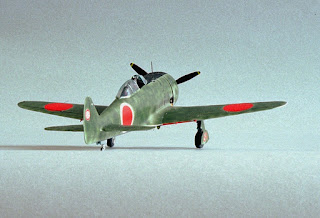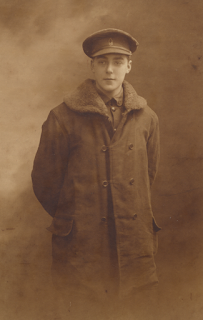For those looking for something unusual, in 2013 AZ Model released a rather neat little 1/72nd kit of the attractive Avia Ba-33 biplane fighter in Japanese Army markings. This aircraft was actually a BH-33L powered by a Skoda 450-500hp engine. In March 1930 one example of the 80 BH-33L aircraft built, s/n 1020, was sent to Manchuria as a demonstration aircraft sponsored by the Skoda Works, Shanghai, which represented the Czech Avia company in China. Manchuria at that time was under the control of Chang Hsüeh-liang, the son of the warlord Chang Tso-lin and known as "the Young Marshal". In 1928 Chang had joined with the nationalist Kuomintang government of China and his nascent air force became the North-Eastern Air Force.
The BH-33L was assembled at Mukden (Fentien, re-named Shenyang in 1929) by Avia mechanic Vacek and then on 12 June test flown by Avia company pilot Cestmir Hanus. In October 1930 it was flown in trials for the benefit of the Headquarters of the North-Eastern Air Force with a Dewoitine D.27 and Letov S.131. Although the Avia aircraft proved superior in the trials it was disassembled and put into bonded storage in a Mukden hangar.
On 18 September 1931 Japanese Army troops occupied Mukden and seized the airfield together with all the aircraft stored there. In October the Avia was re-assembled and re-painted with Japanese markings. It was reportedly used by the Japanese for air observation and ground attack sorties in the Qiqihar area of operations in China. Avia petitioned the Japanese government that the aircraft was Czech property and requested payment of US$30,000. Even though Marshal Chang confirmed the ownership of the aircraft the Japanese at first refused to return it or pay for it. Avia petitioned the Japanese Army command in Mukden, the Japanese Army General Staff in Tokyo, the Czech consulate in Harbin and the Czech Embassy in Japan and eventually on 17 March 1933 the Japanese Kwangtung Army accepted the claim and paid for the aircraft. Its ultimate fate is unknown.
The Ba-33/BH-33L demonstrator was reported to have been originally finished in the standard Czech air force colours of khaki on the upper surfaces and aluminium dope underneath. The AZ instructions show an unusual demarcation of colours around the nose which appears slightly different to that shown by the only known photograph of the aircraft at Mukden, published in the Czech magazine HPM of November 1994 (above). The Avia applied khaki appears to have been a little lighter than the usual Czech Air Force colour and is available from Agama in both enamel and acrylic paints. Whether the aircraft was really re-painted by the Japanese in the 'Japan Dark Green' suggested by AZ is uncertain but the application of the large Hinomaru to the tail surfaces was not a standard presentation and appears to be based on the Czech air force markings. In addition to the Japanese markings the kit provides two alternate schemes for a Czech and Slovak machine.
The kit is injection moulded in grey plastic with an alternative resin prop for use with this version and injection moulded clear parts for the windscreen and what appears to be some kind of gunsight in front of the windscreen (?). The moulding is sharp but the rib tapes on the wings and tail are rather prominent and would benefit from a light sanding. Armament consisted of two cowling mounted 7.7mm synchronised machine guns. Images of the sprue frame and a built-up example of the kit in its Japanese markings may be found here.
Update: Gary Lai has kindly sent a link to his blog here where he has published an old magazine image of another photograph of the assembled Avia in the hangar at Mukden. The dark tone of the image may have suggested the idea that the aircraft had been re-painted.
Update: Gary Lai has kindly sent a link to his blog here where he has published an old magazine image of another photograph of the assembled Avia in the hangar at Mukden. The dark tone of the image may have suggested the idea that the aircraft had been re-painted.
With special thanks to Mirek Kárník for his assistance with this article, to Gary Lai for sending the link to his blog and also acknowledging Lennart Andersson's 'A History of Chinese Aviation' (AHS of ROC 2008) as an invaluable reference source.
Image credits: Box art and profile © 2014 AZ Model; Photo © 1994 HPM magazine via Mirek Kárník; Postcard and plan images via net.

















